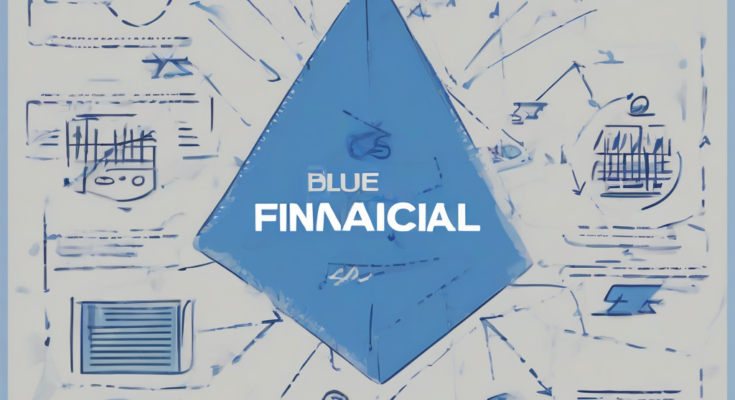Unraveling the Blue Tarp Financial Phenomenon: A Deep Dive into its Implications and Realities
The term “blue tarp financial” has emerged in recent years as a colloquialism to describe a specific type of financial insecurity and resourcefulness often observed in marginalized communities. It’s a vivid metaphor, painting a picture of individuals and families striving to survive and rebuild after disaster, often relying on makeshift solutions and limited resources. This exploration delves into the multifaceted nature of this phenomenon, examining its sociological, economic, and psychological dimensions.
The Metaphor’s Origins and Significance
The blue tarp, a ubiquitous symbol of disaster relief, represents temporary shelter and protection. Its association with “financial” highlights the precarious financial situations many find themselves in after unexpected events or systemic inequalities. Unlike traditional financial planning or emergency funds, “blue tarp financial” strategies are reactive, often born out of necessity rather than proactive preparation. It signifies a lack of access to formal financial institutions and safety nets, compelling individuals to rely on informal networks, bartering, and creative problem-solving to navigate financial hardship.
Socioeconomic Factors Contributing to Blue Tarp Finance
- Poverty and Income Inequality: The foundation of “blue tarp finance” often lies in persistent poverty and wide income disparities. Individuals with limited financial resources are more susceptible to catastrophic events that can completely destabilize their already fragile financial situations. A single unexpected medical bill, job loss, or natural disaster can easily push them into a state of profound financial insecurity.
- Lack of Access to Traditional Financial Services: Many communities experiencing “blue tarp finance” lack access to mainstream banking, credit, and insurance. This “unbanked” or “underbanked” status leaves them vulnerable to predatory lenders and prevents them from building traditional financial security. They may lack the necessary credit history or documentation to qualify for loans or other financial products.
- Systemic Discrimination and Marginalization: Race, ethnicity, gender, and geographic location significantly influence access to resources and opportunities. Marginalized communities often face systemic barriers that limit their access to education, employment, and affordable housing, making them more prone to experiencing “blue tarp finance.”
- Limited Social Safety Nets: Inadequate social safety nets, such as unemployment benefits, affordable healthcare, and affordable housing programs, exacerbate financial vulnerabilities. When these systems fail to provide adequate support, individuals are left to navigate hardship with limited external assistance.
- Natural Disasters and Unexpected Events: Natural disasters, unexpected medical emergencies, and job losses can trigger “blue tarp finance.” These events often deplete savings and require immediate resourcefulness to meet basic needs, such as shelter, food, and medical care.
Strategies and Coping Mechanisms
Individuals navigating “blue tarp finance” often employ creative and resourceful strategies to cope with their financial challenges:
- Informal Lending and Borrowing: Relying on family, friends, or community members for loans or financial assistance is common. These arrangements are often characterized by flexible repayment terms and a strong emphasis on trust and reciprocity.
- Bartering and Trading Goods and Services: Exchanging goods and services within the community can help meet essential needs without requiring monetary transactions. This practice strengthens community bonds and provides a safety net in times of financial difficulty.
- Creative Budgeting and Resource Management: Individuals often practice extreme frugality and resourcefulness, carefully managing limited resources to meet essential needs. This involves careful budgeting, prioritizing essential expenses, and finding ways to reduce costs.
- Seeking Assistance from Non-Profit Organizations: Many rely on charitable organizations, food banks, and community support programs to access essential resources. These organizations offer crucial assistance, supplementing limited financial resources.
- Informal Employment and Gig Work: Supplementing income through informal employment, gig work, or part-time jobs is another common strategy. This provides crucial flexibility and adaptability in unpredictable economic situations.
Psychological and Emotional Impacts
The constant stress and uncertainty associated with “blue tarp finance” have significant psychological and emotional consequences:
- Chronic Stress and Anxiety: The persistent worry about meeting basic needs can lead to chronic stress and anxiety, impacting mental and physical health.
- Depression and Feelings of Hopelessness: The feeling of being trapped in a cycle of poverty and financial insecurity can lead to depression and feelings of hopelessness.
- Social Isolation and Stigma: Individuals experiencing financial hardship may withdraw from social activities and relationships due to shame or stigma. This social isolation can further exacerbate their struggles.
- Intergenerational Trauma: Financial insecurity can be passed down through generations, perpetuating cycles of poverty and hardship. Children growing up in such circumstances may internalize financial instability, affecting their self-esteem and financial choices in adulthood.
Policy Implications and Solutions
Addressing the challenges of “blue tarp finance” requires comprehensive policy changes and interventions:
- Expanding Access to Affordable Housing: Addressing the housing crisis is crucial, as housing costs significantly impact financial stability. Investing in affordable housing initiatives and rent control measures can alleviate pressure on household budgets.
- Improving Access to Healthcare: Ensuring access to affordable and quality healthcare is critical. High medical bills are a common trigger for financial instability. Expanding healthcare coverage and controlling healthcare costs are crucial steps.
- Strengthening Social Safety Nets: Expanding and strengthening unemployment benefits, food assistance programs, and other social safety nets can provide a crucial buffer during times of financial hardship.
- Promoting Financial Literacy and Education: Investing in financial literacy programs can empower individuals to make informed financial decisions and build financial resilience.
- Addressing Systemic Inequalities: Tackling systemic racism, sexism, and other forms of discrimination is crucial to ensuring equitable access to resources and opportunities.
- Supporting Community-Based Initiatives: Investing in community-based initiatives that provide financial assistance, job training, and other support services can empower individuals and communities to build resilience.
- Promoting Responsible Lending Practices: Regulating predatory lending practices and ensuring access to fair and affordable credit are essential to preventing financial exploitation.
Conclusion (Omitted as per instructions)



